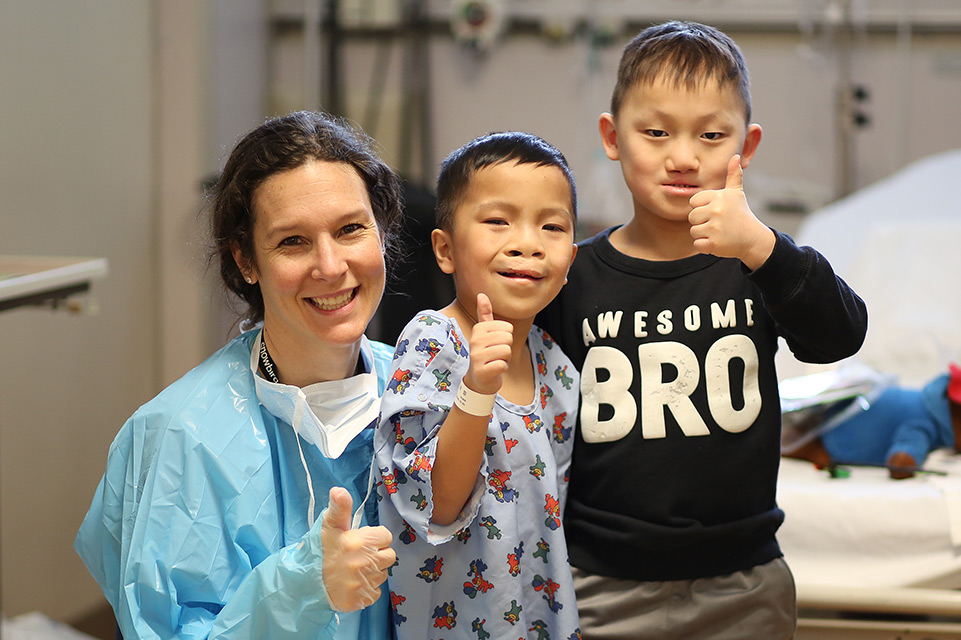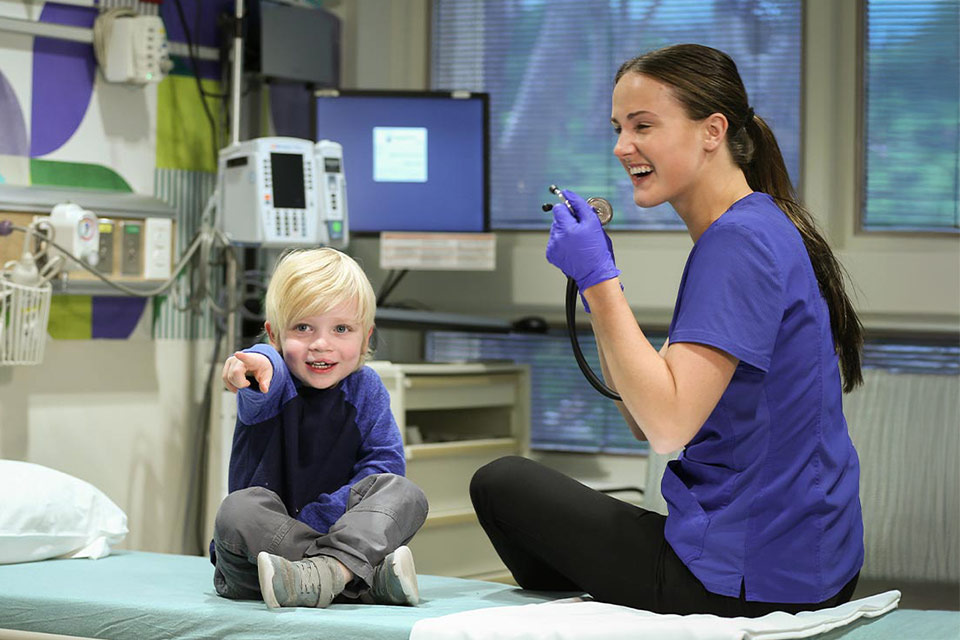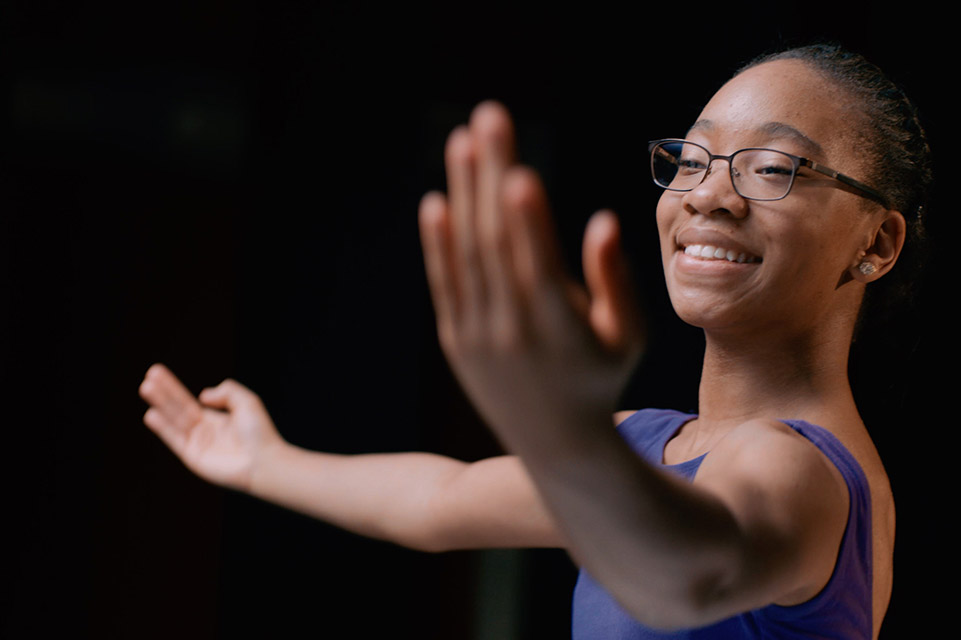Dedicated: November 2, 1968
Shriners Children's Boston opened on March 13, 1964 as a five-bed unit, located on an interim basis at Massachusetts General Hospital (MGH) while a separate building was under construction.
On November 2, 1968, the building located at 51 Blossom Street, next door to MGH, was officially dedicated as Shriners Children's Boston.. That original building was renovated and expanded in two phases in the 1990s. In the first phase, the upper stories of a nine-floor new hospital were built over the existing three-storey Shriners Burns Institute. The bottom floors were then demolished and new construction added to model the newly-renovated building, which was dedicated on May 1, 1999. Shriners Children's Boston specializes in burn care, plastic, laser and reconstructive surgery, complex wounds and skin conditions, and cleft lip and palate care. The hospital is also a research and teaching facility.
Advances in Medical Care and Research
In 1969 former chief of staff John Burke, M.D., and Professor Ioannis Yannas, M.D., a professor of polymer science and engineering at the Massachusetts Institute of Technology, used a cross-disciplinary approach to develop the first commercially reproducible artificial skin that encouraged and facilitated new growth.
In the 1970s, bacteria-controlled nursing units were developed at Shriners Children's Boston to prevent cross-colonization with resistant bacteria in severely burned children.
Relationships with Academic and Medical Institutions
Shriners Children's Boston has relationships with 78 academic and medical institutions including Massachusetts General Hospital, Harvard Medical School, Boston Children’s Hospital, Beth Israel Deaconess Medical Center and Brigham and Women’s Hospital. The hospital is also a member of the Mayo Clinic Care Network.
Location Highlights
- 1980s: Howard Green, M.D., was a pioneer in regenerative medicine and the first to grow skin grafts using a patient’s own cells, one of the earliest examples of stem cell therapy. He made this groundbreaking discovery at Shriners Children's Boston in 1983. The first grafts from cultured skin were used to treat two patients with life-threatening burns at Shriners Children’s Boston in the early 1980s.
- 2003: Shriners Children's Boston opens doors to adult patients for the first time in history after the tragic Station Nightclub fire in Rhode Island that killed 100 people and injured 200 more.
- 2012: Landmark 15-year pediatric burns outcomes study by Shriners Children's and the American Burn Association was published in Trauma and Acute Care Surgery Journal.
- 2000s – present
- Researchers pioneered the most advanced microfluidics technique which separates and identifies one specific cell from milliliters of blood. This technique is used to monitor early infection or other complications of burn patients.
- The hospital has a positron emission tomography (PET) machine, which allows Shriners Children’s investigators to develop the most advanced imaging technique which significantly enhances research capabilities in exploring metabolic disorders, psychological disorders after burn injury, accurate detection of early infections and prevention of burn injuries.
- Ongoing participant in the Boston-Harvard Burn Injury Model System – a collaborative research effort between Spaulding, Mass General Hospital, Brigham and Women's Hospital, Shriners Children's and Boston University to improve care for burn survivors.
- Over 100 research papers are published every year by our doctors, researchers and clinical staff members in high-impact professional journals including Nature, Science, New England Journal of Medicine and Annals of Surgery.
- In the past two decades, staff members have authored nearly 10% of the papers presented at the annual American Burn Association conferences.
specialty pediatric care at shriners children's boston
View More Boston Care Options
Cleft Lip

Cleft Palate

Craniofacial

Plastic Surgery

Wound Care & Skin Disorders

Shriners Burn Institute circa 1968
Phase I of construction - 1995
Phase II of construction - 1997
Shriners Children's Boston today
We Understand the Unique Medical Needs of Children
Keep In Touch
Join our mailing list to stay up to date on everything that's happening at Shriners Children's.
